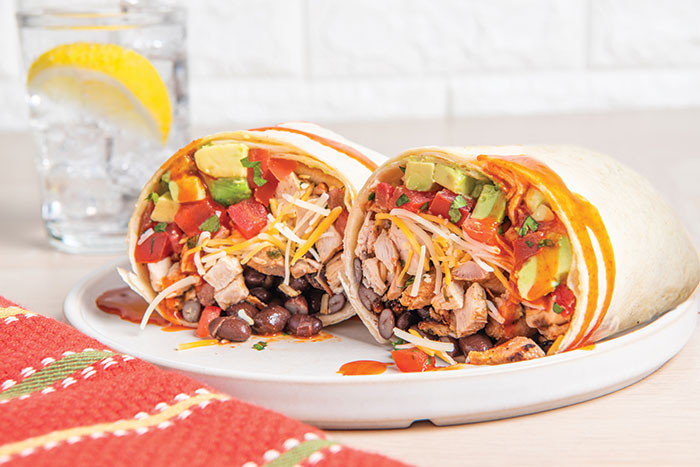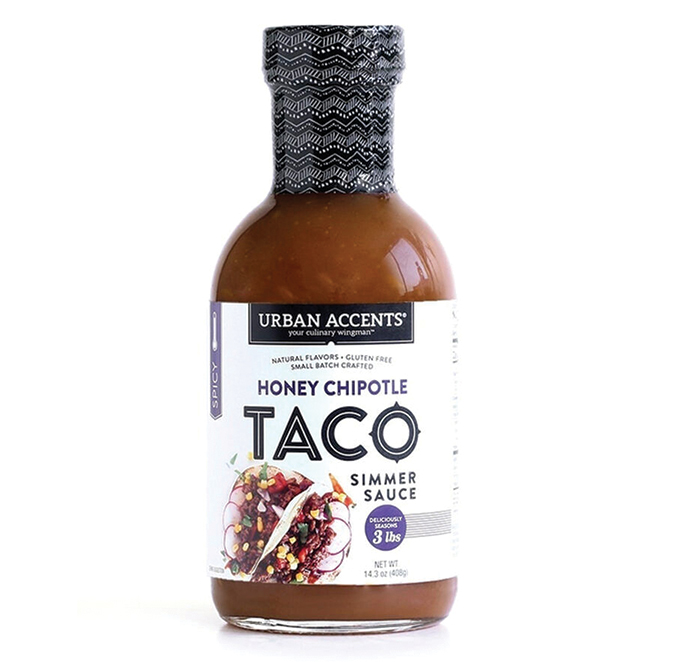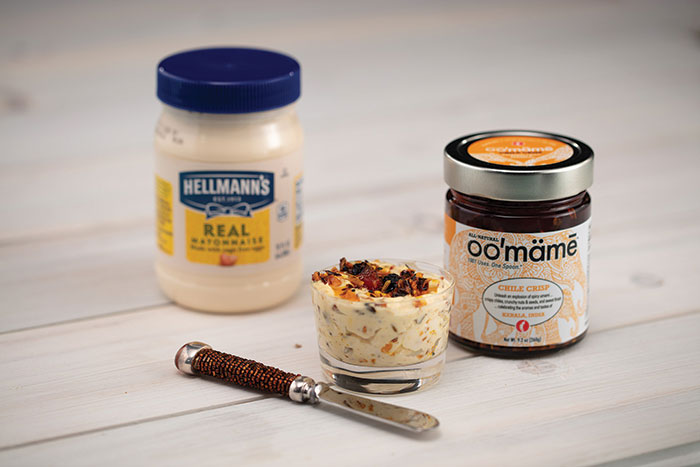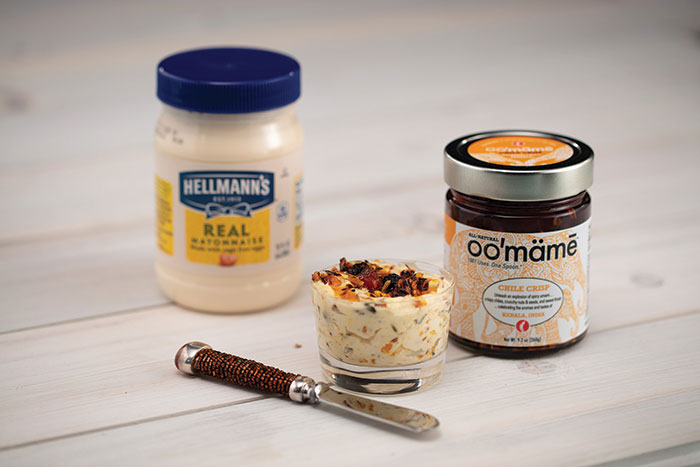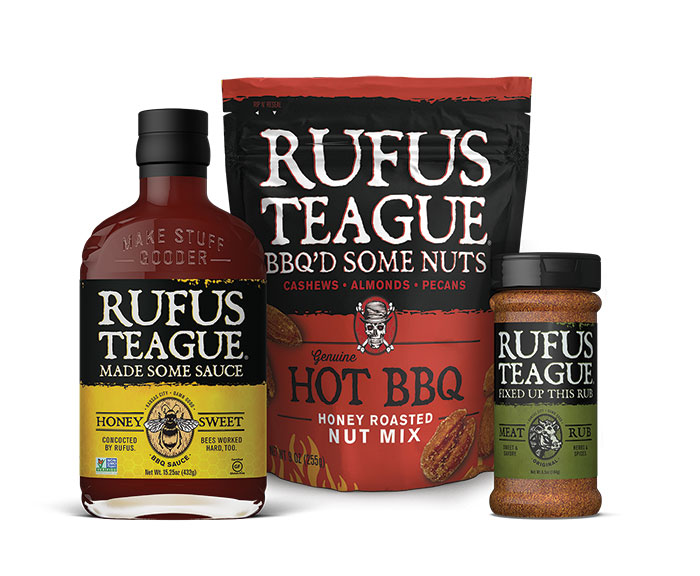
Sauces Condiments Add Some Zing
Product developers target health-conscious consumers with a taste for spicy, global flavors.
Article Content
The modest but steady growth in the sauces and condiments category during the past year has been particularly sparked by spiciness as well as globally inspired flavorings and a continued uptick in health-related claims.
U.S. condiment category sales reached $5.3 billion for the 52 weeks ending July 2, 2022, up 4.6% over the prior year, according to figures from NielsenIQ. Mayonnaise was the top seller at $1.8 billion, up 11.3%; it was followed by ketchup, $1.0 billion, up 2.4%; hot sauce/ chili condiments, $748.2 million, up 7.9%; and mustard, $470.4 million, down 0.4%.
Research from Innova Market Insights shows that North America had the fifth most new products in the cooking sauces/table sauces/mayonnaise and dressings category, with 14% of product introductions between April 2021 and March 2022, while Western Europe had the most.
The United States was the top national market with 11% of new product introductions, followed by Germany, the United Kingdom, China, and Japan, with 4% each, Innova found. And although the category has experienced a compound annual growth rate (CAGR) of 3.6% in new product introductions from 2017 to 2021, the number of rollouts in the U.S. market has declined at a CAGR of 6.6%.
Health-Focused Positioning
Certain health claims have seen significant growth on sauce and condiment labels in the United States during the past four years, according to Innova. The claim “plant-based” has skyrocketed, with a CAGR of 223% from 2017 to 2021. Other label claims with high CAGRs include “no added sugar” at 47%, “high/source of protein” at 34%, “low/no/reduced carb” at 30%, and “sugar-free” at 13%.
Plant-based, which has gone mainstream across grocery categories, has always been a hallmark of sauces and condiments, says Kevan Vetter, executive chef and senior director of culinary, McCormick & Co., maker of the Frank’s RedHot, Cholula, and Zatarain’s hot sauce brands. “Whether vegan, vegetarian, or just curious, there’s truly something for everyone,” he says.
New category entrant Fifth Taste Foods has rolled out a line of four plant-based chile crisp sauces with influences from Mexico, China, Morocco, and India. The sauces are meant for all types of consumers but should especially hit home with vegans, says founder Mark Engel.
Younger consumers in particular prioritize clean labels, says Brad Jungles, chief marketing officer for dry rub, barbecue, and steak sauce maker Rufus Teague. “We made a stand to use natural ingredients and be non-GMO and gluten-free whenever possible,” he says. “It’s something we are proud of—something [the younger] generation is going to be looking for.” The emphasis on clean label led to the rollout of some sugar-free barbecue sauce varieties, he adds.
Stonewall Kitchen—which produces a mix of salsas, aiolis, grill sauces, and jams—also has noted younger generations’ focus on healthful positioning. The company’s Urban Accents brand offers plant-based products, while Napa Valley Naturals focuses on natural and organic SKUs, says Jacob Ouellette, social and media relations specialist.
Trends like keto, gluten-free, and all-natural have and will continue to influence the sauces and condiments category, says Claude Booker, who cofounded Booker’s Soul Food Starters. “The thing about plant-based that we’re seeing, which encouraged us, is that the biggest drivers are those who aren’t particularly vegan or vegetarian. And all-natural is really big; folks are looking for clean labels. That’s our goal. If you can’t get it out of your cabinet, we don’t put it in our package.”
Brandon Clark, owner and founder of hot sauce maker Clark + Hopkins, is also strongly focused on consumers’ health preferences. “You’ll see people look at a label, [and] if it has any sugar at all, it can be out,” he says, adding that the brand uses natural sweeteners like raisins and carrots.
The Marina’s Kitchen brand, produced by Circle B Ranch LLC, is stamped on plant-based pasta sauce, ketchup, chutneys, and steak sauce. Brand founder Marina Backes says her sauces are vegetarian and that she hears consistent consumer interest in her products’ backstories.
“People want to know where the product is coming from, who’s making the product, and how it’s made,” she says. “They like the fact that it’s made in small batches, and we have control over what we sell.”
Heat, Sweet, and Global
Hotter flavors have been at the forefront of taste trends for sauces and condiments. Vetter of McCormick believes Buffalo and Spicy Szechuan are particularly popular, and he notes that hot sauces tend to have fewer calories than other condiments, often with no added sugar or artificial flavors. “Spicy is not only about heat,” he says. “It’s an overall sensory experience that increases flavor and enjoyment.”
“Plus Sweet” is another taste trend that McCormick has been noting, Vetter says, with sweetness balanced by savory, smoky, and hot tastes “for an unexpected complexity that’s satiating.” Citrus fruits, vinegars, and other tart flavors can blend into sweet and sour, while combining flavors like miso and caramel creates “a layered, satisfying profile that adds complexity to sweet and savory applications alike,” he says.
The Campbell Soup Co., maker of the Prego brand of Italian sauces and the Pace brand of Mexican offerings like queso, sees an interest in heat and spice at an all-time high, with 50% of consumers saying they eat spicy food more often, says Inri Mouchette, senior director of innovation, citing survey data from Kalsec.
“There’s definitely a big tranche of products that we have launched in the marketplace to make sure we’re joining that party of spicy flavors consumers are seeking,” she says. International flavors are another influence, with 75% of consumers loving to discover new flavors, she adds, citing data from Innova.
Consumers are looking for a range of spiciness from “Tabasco hot to ghost pepper,” says Engel of Fifth Taste Foods, noting that during the pandemic, home cooks began exploring a wider range of cuisine influences.
In the barbecue and steak sauce subcategories, Jungles mostly has seen greater mixing among various regional styles, such as Carolina, Memphis, Texas, and Kansas City, along with growing influence from the sweet, savory, gingery flavors of Korean-style barbecue.
Booker’s Soul Food Starters—which makes seasoning mixes for collard greens, mac and cheese, and candied yams, as well as a peach cobbler filling mix, with several more in the works—sees a combination of heat and global influences driving the category. “Spice and heat coming out of Asia, the Caribbean, and Africa—their heat tolerance is resonating here with us in North America,” Booker says. “You can have the heat and enjoy [it], if there’s flavor and not just pain.”
New on the Shelf
McCormick has rolled out Frank’s RedHot Wings sauce in a Nashville Hot variety, which brings the heat “with a touch of sweet,” Vetter observes, noting Datassential figures that show “Nashville Hot” has grown 33% in one year and 368% in four years on U.S. restaurant menus.
Fifth Taste Foods has launched its chile crisp sauces under the brand name oo’mämē, which namechecks the umami flavor they impart. “Innovation can be about bringing something new to the world … or bringing things together that haven’t been [together] before,” Engel says. “We wanted to bring global flavors and make it easy for anyone to make these flavors.”
Rufus Teague’s latest offering is its KC Gold line extension, which Jungles describes—with a little friendly rivalry—as a Kansas City take on Carolina barbecue sauces. “We’ve always loved Carolina mustard-based sauces, but we thought there was room for improvement,” he says wryly. “We Kansas City-fied it,” by making it sweeter and adding bacon.
Stonewall Kitchen has added products on a number of fronts—Parmesan Garlic and Jalapeno Bacon Cheese aiolis, Pickle de Gallo salsa, Hickory Brown Sugar grill sauce, Hot Honey wing sauce, and Maple Apple jam, according to Ouellette.
In addition to the four products it’s already rolled out, Booker’s plans starter mixes for banana pudding, fried apples, green beans, and sweet potato pie, as well as vegan versions of its collard greens, mac and cheese, and candied yam seasoning mixes, Booker says, adding that given supply chain issues, the company has elected to wait until 2023 for further launches.
The latest two SKUs from Clark + Hopkins are a Calabria hot sauce made with chilies, sun-dried tomato, and garlic, and a Florida hot sauce made with datil peppers, citrus, and garlic.
Key Takeaways
- U.S. condiment category sales grew at a rate of 4.6% over the past year.
- Condiment makers are emphasizing healthful product positioning with a strong focus on plant-based products.
- Product developers are bringing some heat to the category with spicy formulations.


